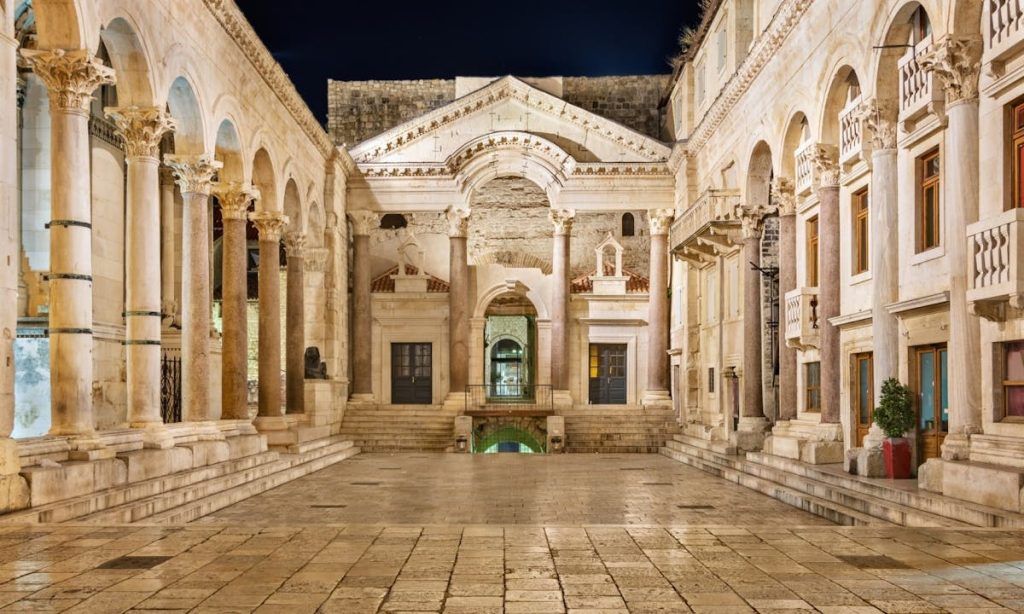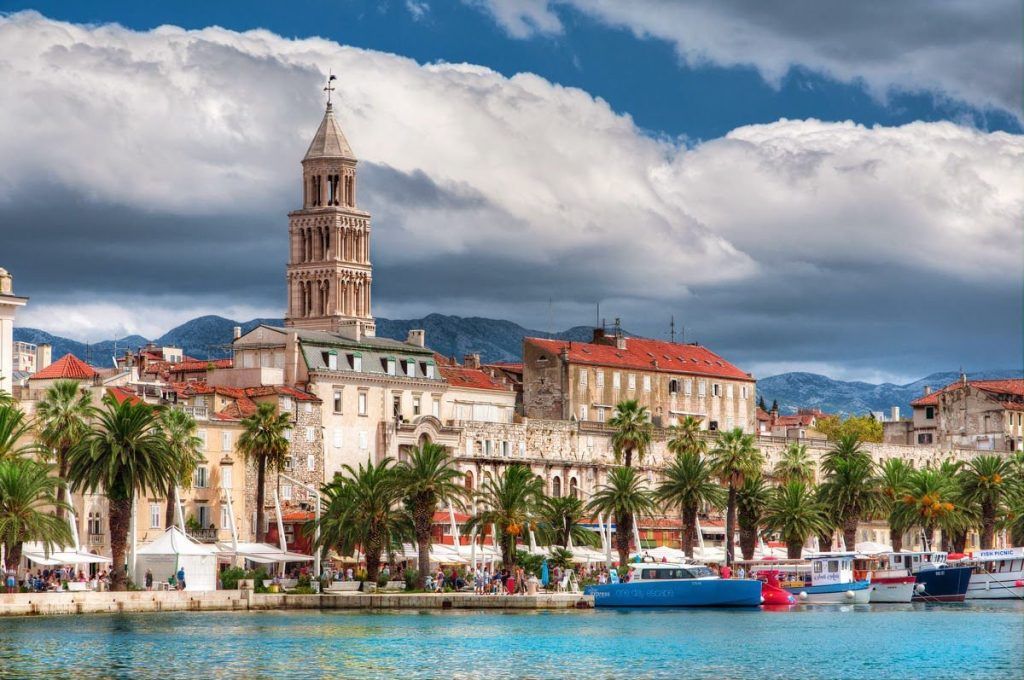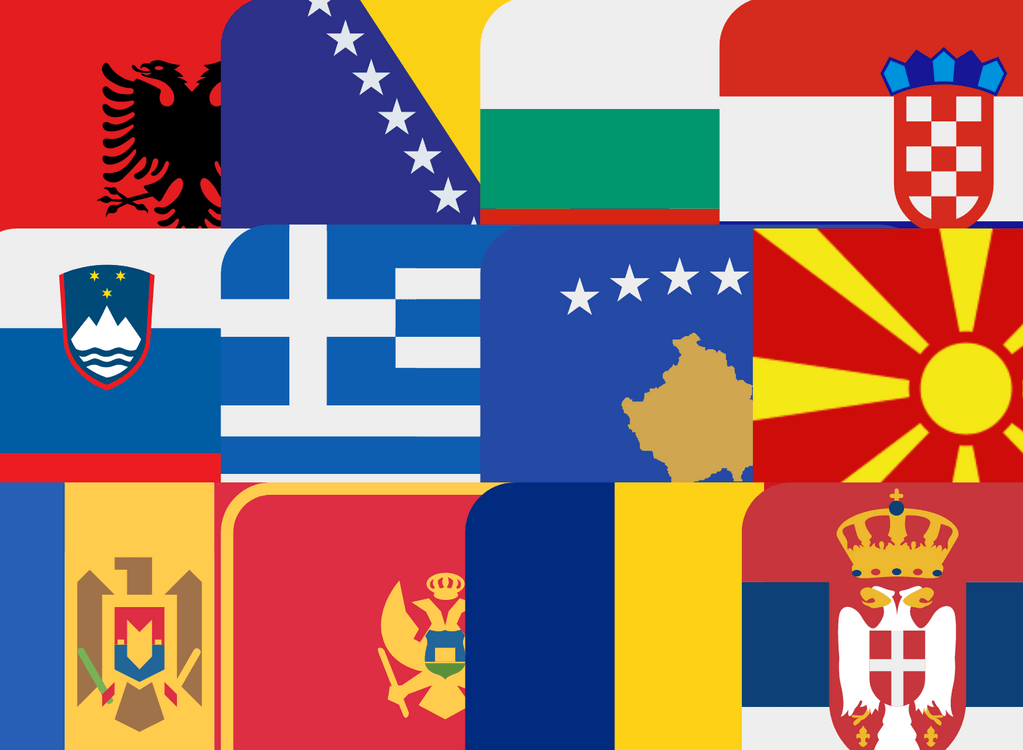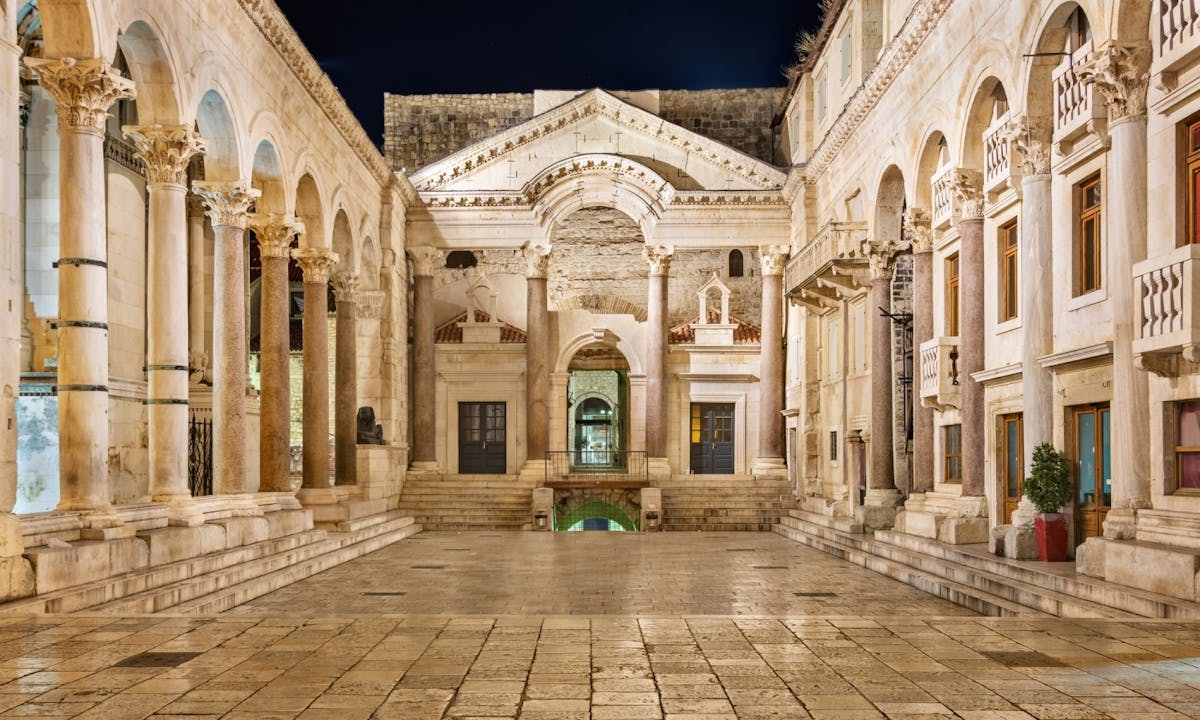History and Wonders of Split
Split, located on Croatia’s Dalmatian coast, boasts a fascinating history and stunning natural beauty. Founded as a Greek colony in the 4th century BC, Split has been influenced by various cultures over the centuries, including Romans, Venetians, and Austrians. This blend of influences is reflected in its architecture, cuisine, and culture.
At the heart of Split is Diocletian’s Palace, an impressive structure built by the Roman Emperor Diocletian in the early 4th century. This palace is one of the best-preserved Roman structures in the world and is a testament to the grandeur and power of the Roman Empire. Originally constructed as a retirement residence for the emperor, the palace has evolved over time and now houses shops, restaurants, and homes, making it a vibrant hub of activity in the city.
In addition to Diocletian’s Palace, Split boasts numerous churches, museums, and galleries that offer insights into the rich history and culture of the region. The Cathedral of Saint Domnius, for instance, is one of the oldest cathedrals in the world and is situated within the palace. Its bell tower offers spectacular panoramic views of the city and the Adriatic Sea.
The history of Split is not only found in its buildings but also in its cobblestone streets and squares. Strolling through the old town is like stepping back in time, with each corner revealing a new aspect of its historical past. The narrow alleys are filled with artisan shops, cozy cafes, and restaurants serving traditional Croatian dishes, adding to the city’s charm.
Split is also known for its vibrant cultural life. During the summer, the city comes alive with festivals, concerts, and outdoor events celebrating everything from music and theater to film and visual arts. These events attract tourists and locals alike, creating a festive and welcoming atmosphere.
In summary, Split is a city that combines a rich historical heritage with a vibrant modern life. Its coastal location, stunning landmarks, and lively cultural scene make it a must-visit destination in Croatia.

Exploring Diocletian’s Palace
Diocletian’s Palace is the heart and soul of Split. This monumental complex, covering over 30,000 square meters, is not just an archaeological site but an integral part of modern city life. Declared a UNESCO World Heritage Site in 1979, the palace is a testament to Roman engineering and architecture.
Built between 295 and 305 AD, the palace was designed as a luxurious villa and military fortress. Diocletian, one of Rome’s most powerful emperors, chose this location for his retirement after abdication. The choice was no accident: the natural beauty of the Dalmatian coast and the Mediterranean climate made Split an ideal spot for imperial retreat.
The palace is surrounded by thick walls and defensive towers, giving it an air of an impregnable fortress. However, once inside, visitors are greeted by a series of open courtyards, narrow streets, and historical buildings that have remarkably stood the test of time. The Peristyle, the palace’s central square, is particularly impressive with its marble columns and the Cathedral of Saint Domnius in the background. This area was originally the ceremonial heart of the palace, where Diocletian presented himself as a living god.
One of the most fascinating aspects of Diocletian’s Palace is its continuous habitation since its construction. Today, over 3,000 people live within its walls, in a unique blend of ancient history and contemporary life. Modern homes and businesses intertwine with Roman ruins, creating a vibrant and dynamic environment.
Highlights of the palace include the Temple of Jupiter, one of the best-preserved structures in the complex, and the underground cellars, which offer a fascinating glimpse into the palace’s original construction. These subterranean spaces, once used for storage and services, now host exhibitions and cultural events.
Another point of interest is the Split City Museum, housed within the palace, which features an impressive collection of historical artifacts, including Roman sculptures, mosaics, and other objects that narrate the rich history of the city and the palace.
Visiting Diocletian’s Palace is a unique experience that allows visitors to walk through history, exploring a site that has witnessed over 1,700 years of change and continuity. From its defensive walls to its luxurious interiors, every corner of the palace tells a part of Split’s and the Roman Empire’s history.

Activities and Tourist Attractions in Split
Split offers a variety of activities and attractions, making it an ideal tourist destination. Whether you prefer exploring historical sites, relaxing on beautiful beaches, or enjoying vibrant nightlife, Split has something for everyone.
One of the most popular activities is wandering through the old town. The narrow, cobblestone streets are filled with artisan shops, cafes, and restaurants serving traditional Croatian dishes. Walking through this maze of streets is a great way to discover Split’s rich cultural heritage and enjoy its welcoming atmosphere.
The Riva, Split’s waterfront promenade, is another must-visit spot. This bustling promenade is lined with palm trees, benches, and cafe terraces where you can sit and enjoy views of the Adriatic Sea. The Riva is also the perfect place for people-watching and enjoying the lively atmosphere of the city, especially at sunset.
For beach lovers, Split offers several stunning options. Bačvice Beach is the most famous and is located within walking distance of the city center. With its clear waters and fine sand, it is the perfect spot for swimming, sunbathing, and playing picigin, a local ball game. Other popular beaches include Kašjuni and Žnjan, which offer a more tranquil atmosphere and spectacular views.
If you enjoy outdoor activities, Marjan Park is a must-see. This forested park, located on a hill overlooking the city, is ideal for hiking, running, cycling, or simply enjoying nature. The park also houses several ancient churches, a small zoo, and viewpoints that offer panoramic views of Split and its surroundings.
History and archaeology enthusiasts will enjoy visiting the Archaeological Museum of Split, which houses a vast collection of artifacts dating from prehistoric times to the Middle Ages. Another interesting spot is the Ethnographic Museum, where you can learn about the traditions and culture of Dalmatia.
Split’s nightlife is equally vibrant. The city offers a wide range of bars, clubs, and restaurants where you can enjoy live music, dance until the early hours, or simply relax with a glass of local wine. The old town area, in particular, is full of nightlife spots that come alive after sunset.
Festivals and cultural events are also an important part of life in Split. During the summer, the city hosts a series of festivals celebrating music, theater, film, and visual arts. The Split Summer Festival is one of the highlights, offering a varied program of performances and events in different historical locations around the city.
In summary, Split is a city that offers a perfect blend of history, culture, nature, and entertainment. Whether you are looking to explore its Roman past, relax on its beaches, or enjoy its vibrant nightlife, Split has something for every taste.
Getting to Split from Zagreb
Getting to Split from Zagreb, Croatia’s capital, is straightforward and offers several options depending on your travel preferences. Whether you prefer the convenience of flying, the adventure of a train ride, the flexibility of driving, or the economy of a bus, there is an option for you.
By Plane
The fastest way to get to Split from Zagreb is by plane. The flight takes approximately one hour, and several airlines operate this route, offering multiple daily flights. Split Airport (SPU), also known as Resnik Airport, is located about 24 kilometers from the city center. From the airport, you can take a bus, taxi, or rent a car to reach your final destination in Split. Shuttle buses are frequent and will take you directly to the main bus terminal in the city center.
By Train
Traveling by train is a comfortable and scenic option, though the journey is longer, taking around six hours. The railway route between Zagreb and Split passes through some of Croatia’s most beautiful landscapes, including mountains, rivers, and small villages. Trains are comfortable and offer a relaxing way to see the country. Tickets can be purchased online or at train stations, and it is advisable to book in advance during peak tourist season.
By Car
Renting a car is an excellent option if you prefer the flexibility to stop and explore along the way. The distance between Zagreb and Split is about 410 kilometers, and the drive takes approximately four to five hours. The most direct route is via the A1 motorway, which is modern and well-maintained. Driving allows you to make stops at points of interest like Plitvice Lakes National Park, one of Croatia’s most stunning natural wonders.
By Bus
The bus is an economical and comfortable option, with several companies offering daily services between Zagreb and Split. The bus journey takes between five and six hours, depending on the route and stops. Buses are modern and typically equipped with air conditioning, Wi-Fi, and reclining seats. Tickets can be purchased online, at bus stations, or directly from the driver. Split’s main bus terminal is conveniently located near the city center and other transport options.
By Ferry
Although there is no direct ferry connection between Zagreb and Split, it is possible to combine a train or bus journey with a ferry trip for a more scenic route. From Zagreb, you can take a train or bus to Rijeka, Zadar, or Dubrovnik, and then board a ferry to Split. This approach can be longer and more complex but offers the opportunity to enjoy the Dalmatian coast from the sea and visit other cities and islands along the way.
In conclusion, getting to Split from Zagreb is easy and offers multiple options for all budgets and preferences. Whether you choose to fly, take the train, drive, or travel by bus, each mode of transportation provides its own.
Another amazing places to visit in Croatia in your next travel.

